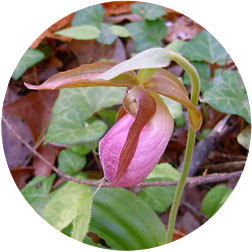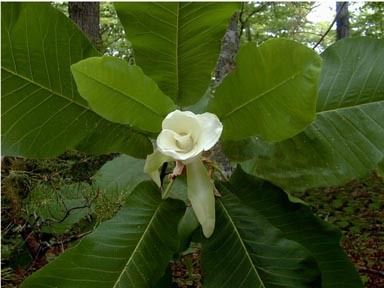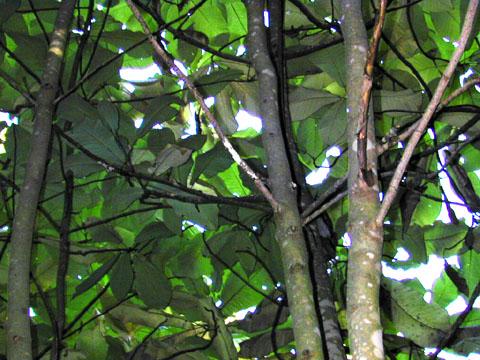Plant Portrait
Scientific Name: |
Magnolia macrophylla |
|---|---|
Common Name: |
Big Leaf Magnolia |
Native/Alien: |
Native |
Type: |
Tree |
|
Partially Opened Bloom
Red Lair Farm and Forest |
|
|
Leaves and Buds It is hard to imagine the size of the leaves and blooms if you have never seem them.
Red Lair Farm and Forest |
|
|
Canopy
Red Lair Farm and Forest |
|
Notes: |
The leaves are the largest deciduous leaf outside the tropics, with lengths reaching 32 inches and widths of 12 inches. The trees are sometimes confused with Magnolia tripeleta. M. macrophylla has 2 rounded lobes at the base of each leaf, whereas M. tripeleta lacks these lobes.
The flowers of M. macrophylla are solitary and can be 10 to 16 inches wide, with 6 white petals. Often there is a purple spot at the base of the petals. The flowers are fragant, bloom in May to early June, and are pollinated by insects. A spherical, cone-like fruit developes that is 3 to 4 inches long and has many orange-red seeds when it ripens in early September. These trees are rare, but not endangdered. They occur in only a few places in North Carolina, and 95% of all the wild trees in the state are found in Gaston County. No one knows why they prefer this region. M. macrophylla is found growing wild in other southeastern states. They like moist ravines beneath taller hardwood trees, which is where they are found on Red Lair Farm. Andre Michaux (1746-1802) was sent to America by King Louis XVI of France to find new plants to ship back to improve the forestry and agriculture there. Louis XVI was encourged by Thomas Jefferson, who was Minister to France, to send this expedition. Michaux spend 11 years traveling throughout the eastern half of the continent. One of his trips took him through Charlotte and into Gaston County where he was the first to collect, describe, and name this rare and beautiful new species of magnolia tree in 1789. With plants gathered near Stanley, Michaux soon introduced the species into the gardens of France. |
Links: |
USDA PLANTS Database Record |



